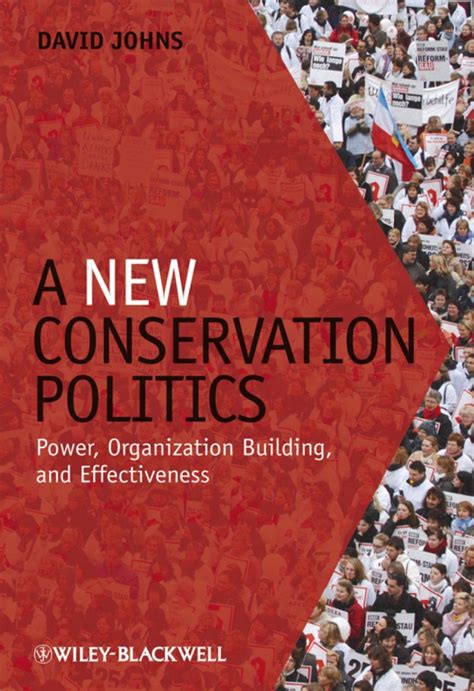Conservation In Politics

The intersection of conservation and politics is a critical and complex topic that shapes the future of our planet and its precious ecosystems. In recent years, the world has witnessed a growing awareness and concern for environmental issues, leading to an increasing number of political discussions and actions aimed at preserving biodiversity and combating climate change. This article delves into the intricate relationship between conservation and politics, exploring the various ways in which political decisions impact the natural world and the strategies employed to advocate for environmental protection.
The Political Landscape of Conservation

Conservation efforts have become an integral part of political agendas worldwide. Governments and policymakers play a pivotal role in shaping the trajectory of environmental policies, which can either foster or hinder the protection of natural resources and wildlife. The political landscape is often a battleground where different interests collide, and the outcomes can have profound implications for the health of our planet.
Policy Development and Implementation
At the core of conservation in politics lies the development and implementation of policies. Governments craft legislation and regulations aimed at conserving ecosystems, managing natural resources sustainably, and mitigating the impacts of human activities. These policies can range from establishing protected areas and national parks to implementing renewable energy initiatives and carbon emission reduction strategies.
For instance, the United States Endangered Species Act (ESA) is a landmark legislation that provides a framework for conserving threatened and endangered species and their habitats. Similarly, the European Union’s Natura 2000 network protects valuable ecological sites across Europe, ensuring the long-term survival of diverse species and ecosystems.
| Policy Example | Impact |
|---|---|
| Marine Protected Areas (MPAs) | MPAs have proven effective in conserving marine biodiversity, leading to increased fish populations and improved ecosystem health. |
| Carbon Pricing Mechanisms | Carbon pricing policies, such as cap-and-trade systems, incentivize emissions reduction and encourage investment in low-carbon technologies. |
| Biodiversity Offsetting | While controversial, biodiversity offsetting policies aim to mitigate the loss of natural habitats by requiring developers to restore or enhance ecosystems elsewhere. |

International Cooperation and Agreements
Conservation often transcends national boundaries, making international cooperation and agreements crucial. Collaborative efforts among nations can address global environmental challenges more effectively. One notable example is the Paris Agreement, a landmark international treaty signed by nearly 200 countries, which aims to combat climate change and limit global temperature rise.
Additionally, initiatives like the Convention on Biological Diversity (CBD) bring nations together to protect biodiversity, while the Ramsar Convention focuses on the conservation and sustainable use of wetlands, recognizing their ecological importance.
Advocacy and Political Influence

Conservation organizations and activists play a vital role in influencing political decisions and raising awareness about environmental issues. Through various strategies, they strive to ensure that conservation remains a priority on political agendas.
Lobbying and Grassroots Campaigns
Conservation groups often engage in lobbying activities, meeting with policymakers and presenting scientific evidence to advocate for specific policies or legislative changes. Grassroots campaigns, involving local communities and individuals, can also exert significant pressure on politicians, demonstrating the widespread support for environmental protection.
For example, the Greenpeace movement has successfully influenced political decisions by organizing peaceful protests, educating the public, and advocating for policies that protect the environment and promote sustainable practices.
Political Engagement and Voting
Voter engagement is a powerful tool in shaping political outcomes. Conservation-minded individuals can make a difference by voting for candidates who prioritize environmental issues and hold them accountable for their environmental policies and actions.
Educating voters about the environmental platforms of different political parties and candidates can encourage informed decision-making and drive the election of leaders committed to conservation.
Media and Public Awareness
The media plays a crucial role in raising public awareness about conservation issues. By highlighting environmental challenges and success stories, media outlets can influence public opinion and motivate individuals to take action. Social media, in particular, has become a powerful tool for conservation advocates to reach a global audience and spark conversations.
Influential figures and celebrities who advocate for conservation can also leverage their platforms to raise awareness and inspire change.
Challenges and Future Prospects
While significant progress has been made in integrating conservation into political agendas, several challenges persist. Short-term political cycles and economic priorities can sometimes overshadow long-term environmental goals. Additionally, the influence of special interest groups and lobbyists can complicate the decision-making process, especially when it comes to resource extraction and development projects.
Sustainable Development and Economic Incentives
Achieving a balance between conservation and economic development is a complex task. However, sustainable development practices offer a promising approach, ensuring that economic growth is compatible with environmental protection. Governments and businesses can work together to create incentives for environmentally friendly practices and investments.
Addressing Climate Change and Biodiversity Loss
Climate change and biodiversity loss are among the most pressing environmental challenges of our time. Political actions must focus on reducing greenhouse gas emissions, transitioning to renewable energy sources, and preserving critical ecosystems. International collaboration and ambitious targets are essential to tackle these global issues effectively.
Empowering Local Communities
Involving local communities in conservation efforts is crucial for long-term success. Empowering indigenous peoples and local stakeholders to manage and protect their natural resources can lead to more sustainable and culturally sensitive conservation practices.
Conclusion
The interplay between conservation and politics is a dynamic and ever-evolving relationship. As the world faces increasing environmental pressures, the role of politics in shaping the future of our planet becomes even more critical. By understanding the political landscape, advocating for conservation, and embracing sustainable practices, we can work towards a more harmonious and resilient relationship with nature.
How do political ideologies impact conservation efforts?
+Political ideologies can significantly influence the priority given to conservation efforts. For instance, conservative ideologies often prioritize economic growth and may view environmental regulations as hindrances, while progressive ideologies tend to emphasize sustainability and environmental protection. However, it’s essential to note that effective conservation policies should be based on scientific evidence and long-term sustainability, transcending ideological boundaries.
What role do citizens play in influencing conservation policies?
+Citizens have a crucial role in shaping conservation policies through their engagement and activism. By voting for environmentally conscious candidates, participating in grassroots campaigns, and holding politicians accountable, citizens can ensure that conservation remains a priority. Additionally, public awareness and support for conservation initiatives can influence political decisions and foster a culture of environmental responsibility.
How can international cooperation improve conservation outcomes?
+International cooperation allows for the sharing of knowledge, resources, and best practices in conservation. Collaborative efforts can lead to more comprehensive and effective strategies for addressing global environmental challenges. By working together, nations can pool their expertise, leverage financial resources, and create unified fronts to tackle issues such as climate change and biodiversity loss.



